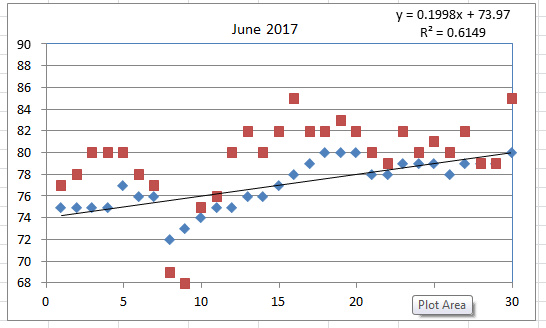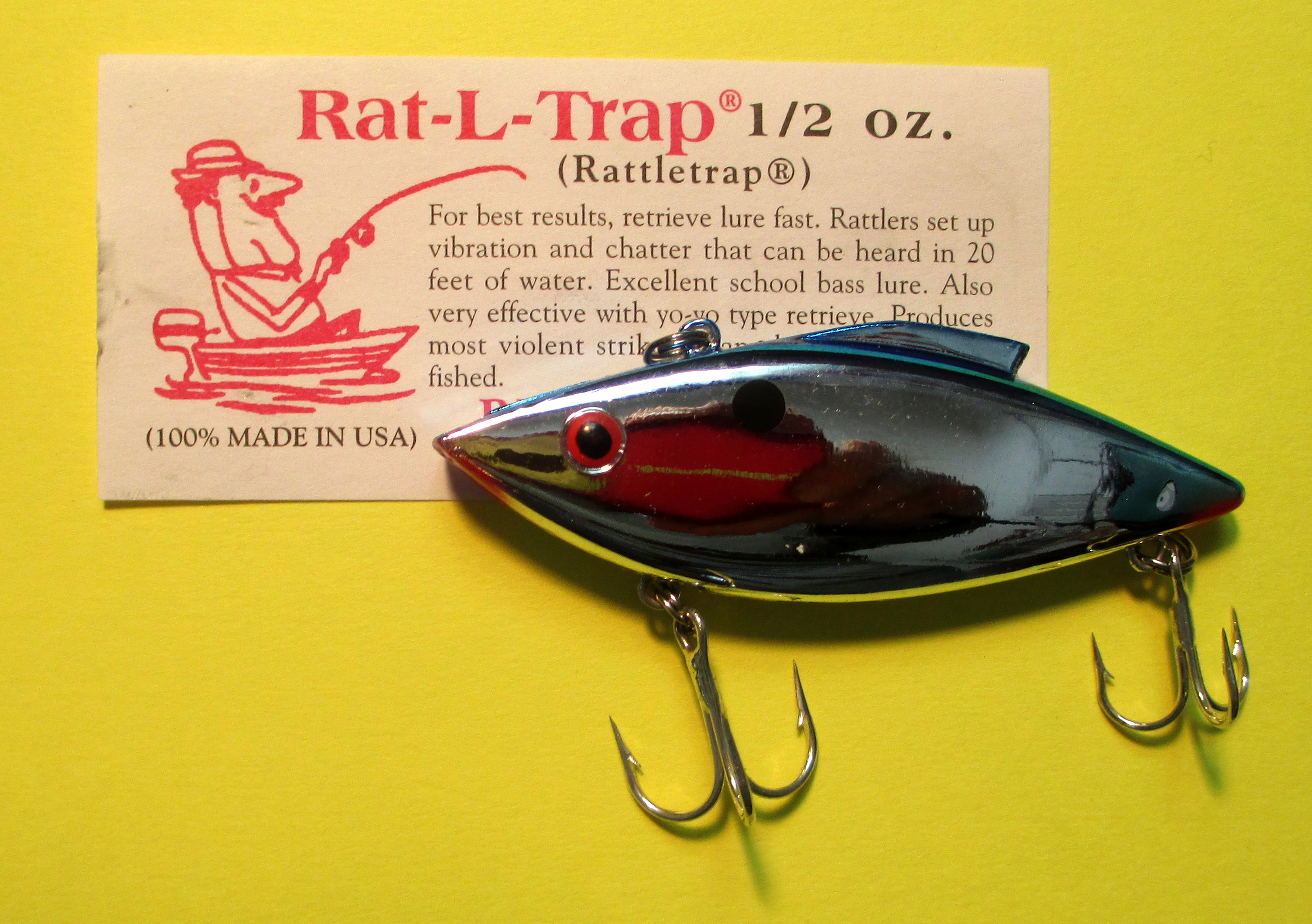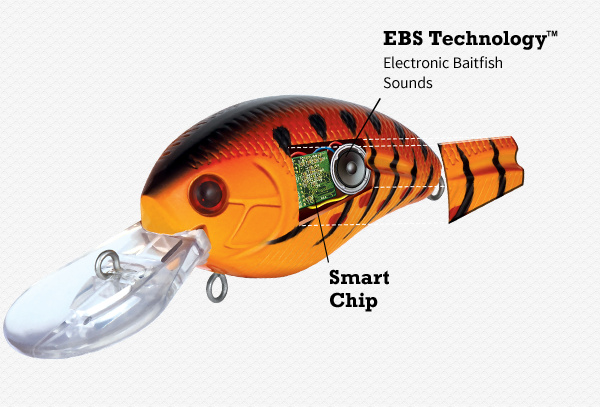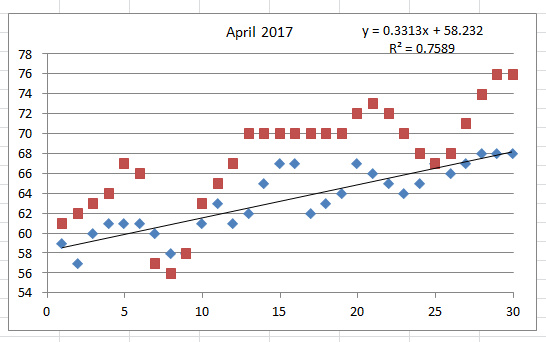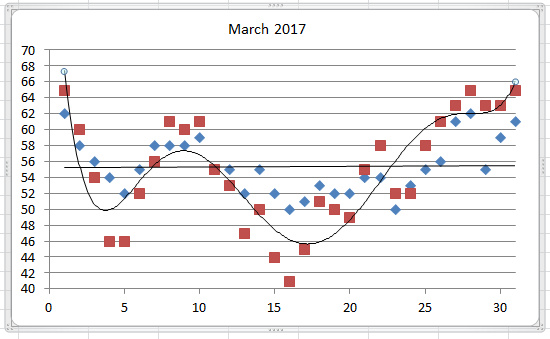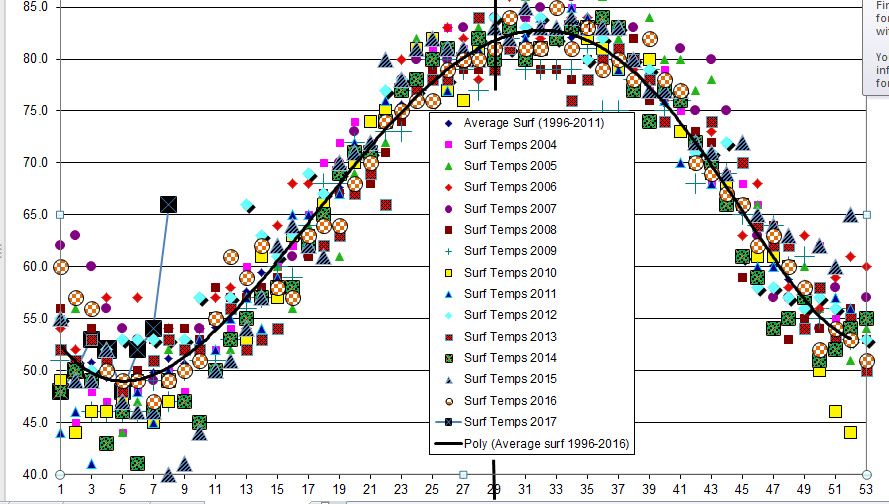For the best results, try live ‘n’ kickin’ bait, By Dr. Bogus (from 2006)
If you like to fish, almost any bait will do, if you really want to catch fish, most people go with live bait. Here is what you need to know about catching and using the real thing for bait.
Although I mostly stick to metal, plastic and sometimes wood as baits, even I must admit that live baits, more often than not, will out fish metal, plastic and wooden artificial baits. However, the key questions to live baits are where and how. As an answer to where and how, Capt. Jeff Cronk (Fishin’ 4 Life Charters, Swansboro), often jokes, “the easiest way to get bait is find a marina that sells them!”
But for many of us, hunting and gathering our own bait is just part of the lure, the process, yes the ritual of fishing. For the inshore and nearshore angler, the list of natural baits is seemingly endless, but the main targets include crunchy baits such as fiddler crabs, and shrimp and small finfish like finger mullet, killifish, and menhaden or pogies as they are often referred to.
Fiddler crabs are favorites foods of the munchers and crunchers, specifically sheepshead and black drum are the prime targets for these baits. “I use a lot of fiddler crabs,” said Cronk, but he warns, “they’re easy to find, easy to see, and hard to get. You’ll find fiddler crabs anywhere there is shoreline. At low tide they tend to come away from the marsh grass to avoid the heat. They leave their little holes and come down to the water’s edge in large colonies from dozens to hundreds to thousands. You can pick them up along the shoreline like that, on the lower part of the tide, especially if there is a good amount of sun out.”
What do you mean, pick them up? With your hands?
“Well,” smiled Cronk, “you’ve got to feel comfortable with that big claw, those one-arm bandits they are called with that big claw, and I’ve seen some claws as big as two and one-half inches long.” But actually, I don’t usually pick them up by hand if I don’t have to,” explained Cronk, “I’ll take a regular dip-net that you use in your live-well…one that has a flat surface so I can lay it down flat on the ground, and I like to hop on the shoreline about 30-yards down from where the crab colony is and kind of surprise attack them over the marsh.”
You herd them in?
“That’s it, I herd them to the water’s edge back and forth, said Cronk, “you know there are thousands going by me or hundreds going by me, so if I can corner 50 to a 100 along the water’s edge, I can sweep them up with that little net and I’ve got plenty. If not, you’ve got to pick them up one-by-one, which can be time consuming!”
As far as rigging a fiddler, it’s pretty straight forward, explains Cronk; “you can hook them just about anywhere. They are not very big so there isn’t a corner or this or that side that is best, so I come up the back side of the fiddler crab from the bottom to the top, staying close to one side of the crab. It doesn’t necessarily have to be alive, as long as he’s fresh. I’m using a live bait hook, a short shank, wide gap hook, usually a strong stout hook, because I’ve had this year again I’ve had big sheepshead snap a hook in two or bite a hook in two!” “As far as black drum, said Cronk, “I use the same type of hook a live bait hook usually on a slip cork rig around a shallow oyster bed and letting it float just above the depth of the bottom.”
How shallow?
“Most of the places I’m catching my black drum are between one and three-foot of water, said Cronk, and I tend to fish them on the falling tide when the black drum would have to come off the oyster rocks and hang in the eddies just off the rocks.”
Now shrimp, there is nothing in the water that won’t eat shrimp.
“Right, agrees Cronk, “he is THE best bait, I have caught every inshore species and believe it or not, I’ve caught a king mackerel on live shrimp. But then again it’s the toughest to fish with because something will bite on your hook within seconds to a minute or so from when it hits the water. And if you are trying to target certain species it can be irritating.”
Rigging is a little more complicated than some other baits, especially if you want to keep your shrimp alive, so we asked Greg Dennis, owner of The Reel Outdoors Tackle shop in Emerald Isle, for some help. “There are three ways that I know of,” said Dennis, “the first is to place the hook into the base of the horn, which is that sharp point that comes out of the shrimp’s head. Below the horn is a dark spot in the shrimp’s head, that’s the brain, if you hook him there you will kill them, so you hook it in the clear area below the dark spot. Finally some hook the shrimp in the tail, not in the end of the tail but a ¼ or ½ inch above the tail.”
As Cronk pointed out, shrimp will catch anything, but the prime targets are speckled trout, black drum, sheepshead and red drum too. “I’ve have seen times when they (red drum) won’t eat a mullet minnow,” said Cronk, “but they’ll take a live shrimp, which is very odd to me.”
Floating them on a cork at the Cape Lookout rock jetty for specks or on a Carolina rig are the standard methods of fishing shrimp. Carolina rigs can come in several flavors, a true Carolina rig, where your egg sinker is placed on your main line, above your leader material, or a modified Carolina rig as Cronk uses, in which your egg (or slip sinker) weight is placed on your leader material between your swivel and hook. Leader material is typically 15 to 40-pound fluorocarbon and the hooks are usually gold Kahle (wide gap) hooks from No. 2 to a 3/0 in size.
We’ve talked the crunchy baits, now for the live minnow baits. What are the favorites? “The tiger-side (striped killifish) minnows are actually my favorite,” explained Cronk, “when you start off in the season when you can’t get those finger mullets in April and early May when trying to catch flounder, you can catch those tiger-side minnows along the (ocean) beach and so I start off every season with the tiger-side minnows and slowly move into the finger mullets threadfin herring.”
Like many baits, live minnows are caught with a cast net. “I actually stand on the sand ankle deep in the water, said Cronk, and five or ten feet in front of me and you’ll see these little wakes leaving the sand. You’ve got to hit then right then with the net, because they will leave before you can get on of top them. So you cast up ahead of yourself.”
Another member of the killifish family is the common killifish or mud minnow. “Yes, mud minnows are another good bait,” said Dennis, “I trap them in minnow traps, using canned dog food or cat food for bait. You can find the mud minnows up in the creeks and ditches and around docks too.”
“Although most baits like shrimp and mullet require a live well or aerator,” explained Dennis, “mud minnows (and tiger-minnows too) are very hearty, and can sit in a bucket all day and still be fine.”
Although Cronk’s favorite bait may be the tiger-minnow, Dennis prefers finger mullet. “They are the all around bait for just about everything,” said Dennis, “drum, trout and flounder, and the pinfish don’t peck at it like they do shrimp either.”
The Tiger-minnows are an early season bait, the finger mullet come later. “Usually by the first of May we start seeing the mullet minnows,” said Cronk, “they are still small then, within two weeks from when we see them they are an inch or two long, within several weeks after that they are good size, and they were late this year. They grew slowly but now they are everywhere.”
So where can you catch them? “You can find them along the shoreline and the canals and creeks,” said Dennis, “and the best time is on the falling tide. When the tide is high the mullet and other bait (like shrimp) are up in the marsh grass and hard to get.”
Rigging is straightforward according to Cronk. “I’m lip hooking them,” said Cronk, “on my Carolina rigs or my modified Carolina rigs I’m casting out and doing a slow retrieve, so I’m dragging the minnow, and I’m putting in under it’s chin and through the top of it’s lips and I’m trying to not pierce it’s brain and stay away from it’s eyes. If I work them on a float cork, I’ll hook them at the anal fin on the underside of the body or on top, on the dorsal fin.”
“I don’t do that with menhaden a lot,” said Cronk, “because the menhaden will circle around and tangle your rig up. Menhaden are strictly nose hooked through the nostrils sideways. If you close his mouth, he will die within seconds if he can’t breathe.” So what about menhaden? Well, according to Cronk, “menhaden are the most abundant and easiest fish for most folks to catch. The menhaden we’re targeting, I use them when it’s hard to get the mullet minnows, and we are targeting flounder. Quite often I use the peanut pogies, and they may be two to four or five inches long and I use them on the Carolina rig. When they start getting about five-inches long or so, and all the way up to nine to 12-inches long, we’ll be targeting Spanish and king mackerel usually using a live bait rig with a treble hook.”
We mentioned using a cast net for catching shrimp, and our finfish baits, but what are the best sizes for these inshore baits? “The best all around cast nets,” said Dennis, “are 5 or 6-feet in radius (10 to 12-feet in diameter) with a mesh size of 3/8-inch. If you are trying to catch the smaller glass minnows you need a net with a ¼-inch mesh size or they will just go through the net.”
Now throwing a cast net is an art in itself, and is as individualized as each thrower. But that’s another article.


